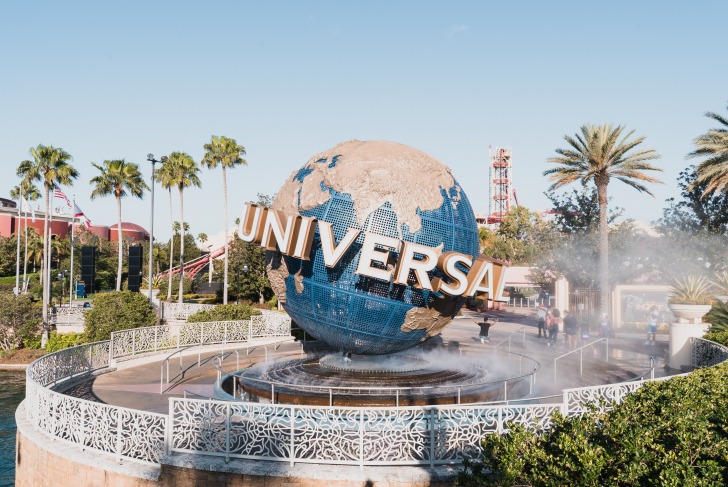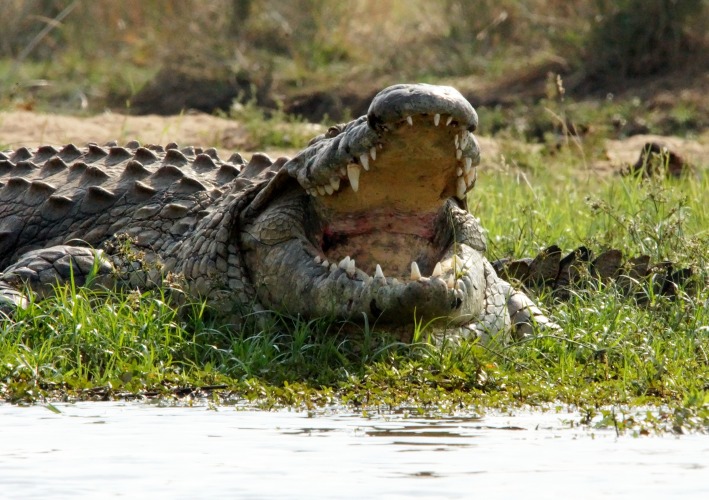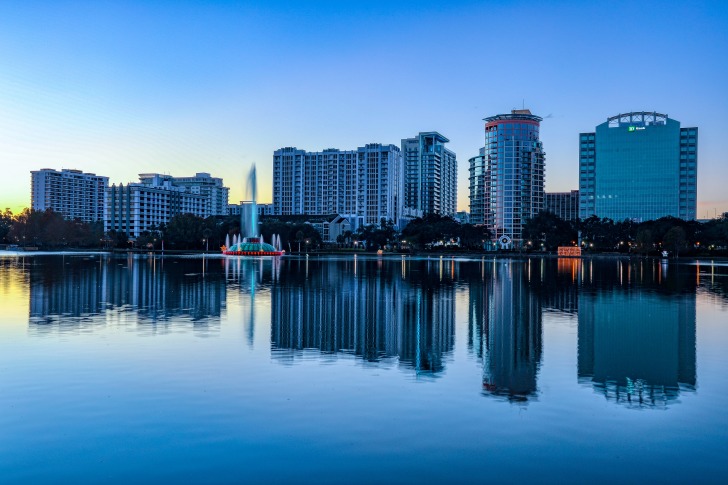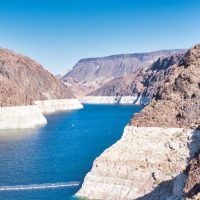Scientists believe that alligators have existed for 150 million years.
Moreover, at least one alligator lurks anywhere you find standing water, such as a pond, lake, lagoon, canal, or swamp.
Furthermore, Orlando is no exception.
Unfortunately, alligators have become a severe problem in Orlando, thanks to people feeding them, insisting on taking selfies, or swimming with them.
Additionally, because Orlando lakes have connecting pipes or channels, alligators move freely between them and walk overland when necessary.
In 2016, a two-year-old Nebraska toddler named Lane Thomas Graves died in an alligator attack at the Walt Disney World’s Grand Floridian Resort and Spa.
As a result, park officials have aggressively removed more than 250 nuisance alligators from the park as of June 2021.
Park officials pay a nominal removal fee and allow the trappers to sell the meat and hides.

Contents
- So, Are There Alligators in Orlando?
- Which Alligator Species Inhabit Orlando?
- Is it Safe to Swim in Orlando?
- Interesting Orlando Alligator Facts
- Alligators vs. Crocodiles vs. Caiman
- 6 Safety Tips for Swiming in Alligator-Infested Waters
- Summary
- Orlando Safety Overview
- Frequently Asked Questions
- How many people in Orlando die every year from alligator attacks?
- Is it safe to go to Walt Disney World?
- Should I visit Orlando for spring break?
- How many nuisance alligators have park officials at Walt Disney World's Grand Floridian Resort and Spa removed since an alligator attacked and killed two-year-old Lane Thomas Graves?
- What other dangers will I face while swimming in Orlando?
- How likely is an alligator attack near Orlando, Florida?
- I like to swim before work, before or just after sunrise. Is that a problem?
- I have a fenced pool. Do I have to worry about alligators?
- Should I zigzag while running from an alligator?
- Where will a punch do the most good during an alligator attack?
- Is it safe to swim where I see alligators?
- Can I jump into the water next to a pier if I do not see any alligators?
- If attacked, what should I do?
So, Are There Alligators in Orlando?
From its westernmost corner at the intersection of South Apopka Road and Florida‘s Turnpike, also known as SR 91, Orlando extends to its northernmost spot along Edgewater Drive.
Orlando’s easternmost extension lies along State Road 528, the Martin B. Anderson Beachline Expressway.
Orlando curves around to its southernmost point along Boggy Creek Road.
When you look at the map outlined in red, Orlando looks like two separate cities: the northwest and the southeast.
Inside the curve between the two parts, the area includes numerous lakes, ponds, and marshlands.
Outside the arc of the two sections of Orlando, you find even more swamps, lakes, and ponds.
According to Themed Entertainment Association, there are more than 57,000 daily attendees at Disney’s Animal Kingdom, 34,342 at Epcot, and 31,000 at Disney’s Hollywood Studios.
Thus, nearly 123,000 people visit the Orlando area just for theme parks.
Unfortunately, this daily influx of vacationers means more opportunities for alligator encounters, leading to bites and fatalities.
Which Alligator Species Inhabit Orlando?
Only one of the two alligator species in the world — The American Alligator (Alligator mississippiensis) — belongs in Florida.
The Chinese alligator, Alligator sinensis, is the only other living species of alligator and belongs to the Yangtze River region in China.
The Chinese alligator is critically endangered, and Florida has no breeding colonies running loose anywhere in the state.
Is it Safe to Swim in Orlando?
You will see alligators most often from dusk to dawn, so never enter any water, even a swimming pool, unless you can see the entire bottom clearly to verify no alligators lurk nearby.
However, any water source where you have seen alligators resting during the day has alligators nearby after dark.
Even alligator experts, such as Greg Graziani, Director of Wildlife Florida Gator Gardens, have had severe injuries from alligator attacks.
Graziani, who has worked with alligators since childhood, cautions everyone never to let down their guard or lose caution and respect for the animal.
Whenever you approach an alligator, you approach an apex predator.
Since alligators can and will eat each other, they have no problem viewing you as potential prey.
In addition, even a bite from a small alligator can cause a severe injury and lead to an infection.
According to the Florida Fish and Wildlife Commission, however, you have a one in 3.1 million chance of an unprovoked alligator attack causing severe injury.
In contrast, your chance of dying from being attacked by a dog is one in 69,016.
In addition, you have one chance in 6,368 of sunstroke and a one in 1024 chance of drowning.
In other words, if 3.1 million people stood together, 3027 of us would drown, 487 would have sunstroke, 44 of us would have severe dog bites, and only one would experience an alligator attack.
Interesting Orlando Alligator Facts
Because Florida has one alligator for every 15 people, alligator attacks should happen more often.
Mating season begins as early as March, while breeding and brooding continue through November.
Males show more aggression in early spring, while females continue to defend their nests and hatchlings for up to a year after laying their eggs.
Alligators will eat anything smaller than themselves, so hatchlings remain at risk from other predators, including fellow alligators, that entire time.
Shallower water attracts more alligators, but that does not mean you won’t see one in deeper water.
For safety, always swim with a buddy, preferably with a lifeguard present.

Alligators vs. Crocodiles vs. Caiman
Both crocodiles and caimans have v-shaped snouts.
Moreover, the crocodile’s snout runs longer than the caiman’s.
The broad-snouted American alligator has no visible teeth, while the crocodile does.
The Stokes Alligator, named after angler Mandy Stokes and the longest alligator caught to date, measured 15 feet, 9 inches.
Except in captivity, neither crocodiles nor caimans thrive in Orlando.
They need warmer year-round temperatures to breed successfully.
However, the Argentine black and white tegu (Salvator merianae), introduced from South America via the exotic pet trade, has become a pest in the Orlando area, eating eggs from alligators, gopher tortoises, American crocodiles, sea turtles, and ground-nesting birds.
Since several of these species are threatened or endangered, the Florida Fish and Wildlife Conservation Commission has imposed a commercial breeding ban on non-native tegus.
6 Safety Tips for Swiming in Alligator-Infested Waters
- When in doubt, don’t. Stay away from piles of debris, as that may be an alligator nest, especially between April and November.
- Alligators prefer shallower water. Avoid any area where you cannot see the bottom of the pond, lake, river, or stream
- Despite alligator parks such as Gator Land showing staff in the water with alligators, don’t try doing it yourself. Most alligators that lose their fear of humans will attack more often.
- Do not approach alligators any closer than 30 to 50 feet. Alligators can run up to 35 miles per hour for a shorter distance.
- Do not walk pets or take toddlers near places where you have spotted alligators or have seen warning signs about them. Children do not recognize danger fast enough and cannot outrun even a slower-moving alligator.
- Do not drink alcohol and get into gator-infested waters. That selfie or the admiration you receive for your stunt will not replace your lost arm or leg.
Summary
The horrific death of two-year-old Lane Thomas Graves in 2016 shocked everyone, but it has not kept people from visiting Orlando and Walt Disney World.
Nearly 123,000 people visit the Orlando area daily just for its theme parks.
Vacationers let their guard down, understandably, when visiting Orlando.
Thus, the high population of alligators on the site creates a recipe for disaster if people do not exercise caution and common sense.
Stay out of all standing water if you see signs warning of alligators or if you see an alligator.
Do not approach alligators, especially ones protecting a nest.
You provoke an attack if you come within sight of any alligator during the mating or nesting season.
Instead, stay behind barriers and keep at least 30 to 50 feet away from any alligator you see.
Also, stay away from the edges of ponds, pools, lakes, or streams from dusk to dawn.
Do not approach alligators, especially ones protecting a nest.
You provoke an attack if you come near any alligator during the mating or nesting season.
Instead, stay behind barriers and keep at least 30 to 50 feet away from any alligator you see.
Also, stay away from the edges of ponds, pools, lakes, or streams from dusk to dawn.
Do not feed alligators, ever. Providing them with food causes alligators to lose their fear of humans and begin seeing them as food sources.
Leave feeding alligators to professionals or the alligators themselves.
Alligators are essential in the Florida ecosystem, eating carrion, small mammals, and other alligators.
This activity prevents overpopulation and keeps bloodlines healthy.
Unfortunately, habitat destruction keeps forcing alligators into confrontations with humans.
Only if we stop building in swamplands will we ever see alligator attacks drop to zero.
Treat all Florida wildlife with caution and respect.
Any animal, wild or tame, can and will attack if it feels threatened, so keep your distance when you see an alligator lurking.
And never forget: there is no such thing as a tame alligator.
You only get one chance to be wrong in an alligator encounter, which could easily be your last.
So why take that chance for bragging rights or an out-of-focus photo or reel?
Orlando Safety Overview
READ THE FULL REPORT: Orlando Safety Review
Safety Index:
- OVERALL RISK: MEDIUM
- TRANSPORT & TAXIS RISK: MEDIUM
- PICKPOCKETS RISK: MEDIUM
- NATURAL DISASTERS RISK: MEDIUM
- MUGGING RISK: LOW
- TERRORISM RISK: LOW
- SCAMS RISK: LOW
- WOMEN TRAVELERS RISK: MEDIUM
Frequently Asked Questions
How many people in Orlando die every year from alligator attacks?
Since 1948, Florida has seen two dozen deaths from 422 unprovoked alligator attacks.
Four have taken place since 2012.
Is it safe to go to Walt Disney World?
Yes, maintain your situational awareness near any body of water in Orlando, including ornamental fountains and small ponds.
Should I visit Orlando for spring break?
You can see the city’s sights safely if you stick to posted beaches and pools with lifeguards and stay inside designated swimming areas.
Also, avoid drinking alcoholic beverages in the vicinity of alligators since you lose judgment when under the influence.
How many nuisance alligators have park officials at Walt Disney World's Grand Floridian Resort and Spa removed since an alligator attacked and killed two-year-old Lane Thomas Graves?
The park has paid trappers to remove 250 nuisance alligators since 2016.
What other dangers will I face while swimming in Orlando?
Your chance of dying from sunstroke lies at one in 6368.
The possibility of a fatal dog attack is one in 69,016, while you have a one in 1024 chance of drowning.
How likely is an alligator attack near Orlando, Florida?
The state has 1.5 million alligators, and the statistical chances of a fatal attack hover around one in 3.1 million.
I like to swim before work, before or just after sunrise. Is that a problem?
Yes.
Alligators are most active between dusk and dawn.
I have a fenced pool. Do I have to worry about alligators?
Yes.
Alligators can climb, so even a fenced pool could attract an alligator.
Should I zigzag while running from an alligator?
No, that makes the space between you and the alligator shorter.
So instead, run as fast and far as you can in a straight line away from the water’s edge.
Where will a punch do the most good during an alligator attack?
Punch as hard as you can just before and between the eyes, and run as far and fast as you can while screaming at the top of your lungs.
Is it safe to swim where I see alligators?
No, you should never enter any water where you see alligators or waning signs posted about them.
Can I jump into the water next to a pier if I do not see any alligators?
Alligators hover near docks and piers, hoping to catch an easy fish meal.
Never jump into the water near a dock, port, or mangrove swamp edge.
If attacked, what should I do?
Scream, kick, flail, punch, roll, and run away as soon as you can get loose.












I’m
Scared to death now and going on a trip with my family, grandchildren and old dog. I wish I could cancel
Not alligators related, but just came in to say that Lake Eola in the center close to downtown Orlando is a great place to see animals!
You can find there all sorts of ducks, geese, pelicans, and many more big birds walking around, I am not sure of all their names.
Also many turtles in the waters – it’s a great place for taking a walk around a lake while seeing all the animals.
As a Florida resident, I have seen alligators in many places throughout the state.
I always keep my distance and respect their space, knowing that they are wild animals capable of causing harm if provoked or threatened.